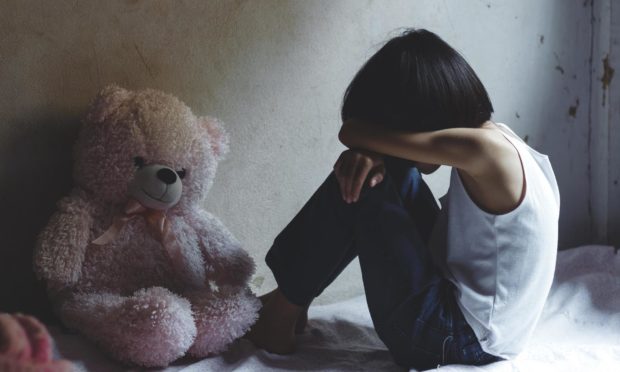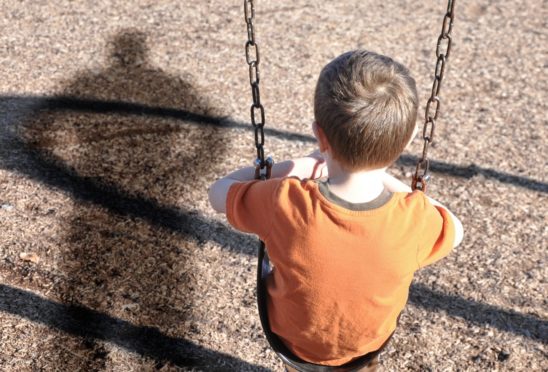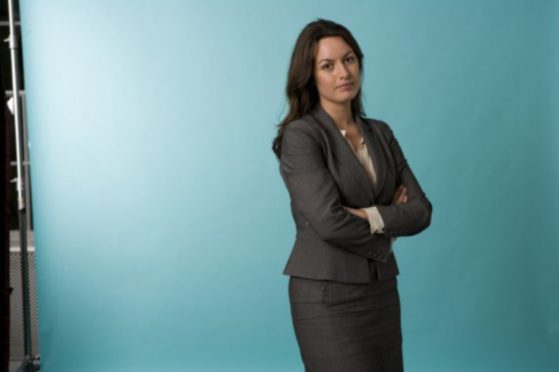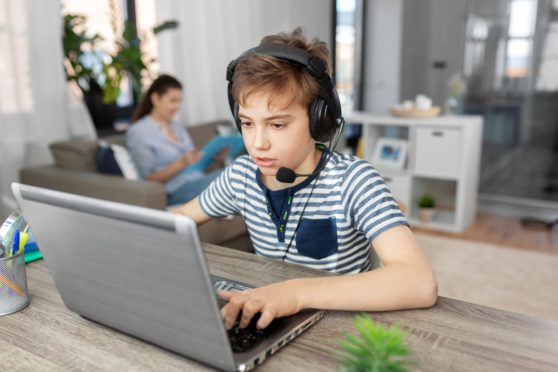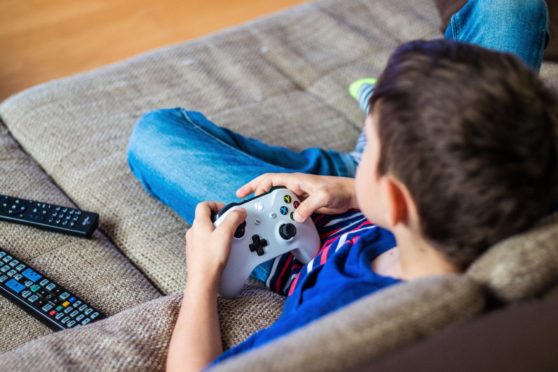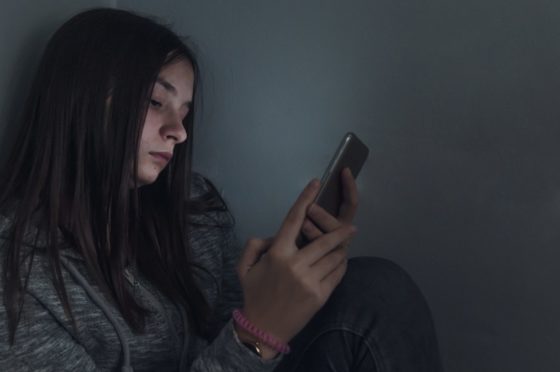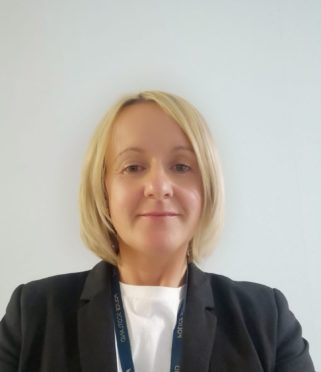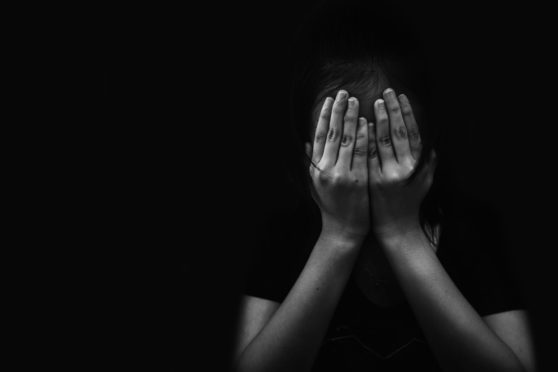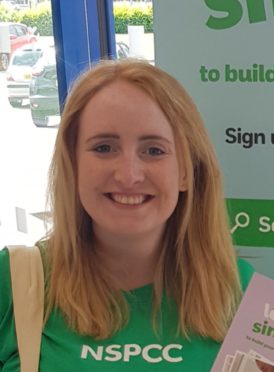Calls have been made for a “reset” in the post-pandemic world in a bid to get youngsters to only have followers on social media who they know.
While the online world has helped people stay in contact during lockdown, concerns have been heightened over safety and the risks of young people falling victim to a type of sexual abuse that often goes unseen.
It comes as police in the north-east have spoken of how people from all walks of life – including teachers, bus drivers and hotel workers can be vital in spotting the signals that a young person is a victim of Child Sexual Exploitation.
CSE can take various forms such as children being coerced into sending naked pictures or sexual messages, and streaming or filming themselves carrying out sexual acts.
It can also include having sex with friends or associates of the abuser, and prostitution.
Heartbreakingly in some cases the perpetrators can be family members or older girl or boyfriends.
‘Shift during pandemic’
CyberSafe Scotland works with schools, parents and local authorities to safeguard children from exploitation and abuse online.
Its director, Annabel Turner, said one of the “concerning trends” coming out of the pandemic has been the number of children who have followers on social media who they don’t know.
She said: “Before lockdown we had been getting out the message quite well on that, that it was really important they were just using social media on private mode and with followers they know – but that has shifted a lot during the pandemic.”
Parents needs to be alert to messaging and streaming”
“Parents need to be alert to two things – one platforms which enable direct messaging, so obviously encompasses all the gaming platforms as well, and then secondly the platforms which involve something very close to live streaming which is what Tik Tok and Snapchat do.
“The videos are so short and the children are publishing them so often that anyone who is looking for children can get a huge amount of information on the children that they are trying to get a hold of very quickly.”
Often those who are trying to target children will contact thousands at a time.
‘Online offenders disguise identities’
One way those involved in grooming children might try to disguise their intent is by using friendly rather than sexualised language in a bid to develop trust.
Annabel said: “So if you have an online offender who has disguised their profile as a child’s profile or teenager’s profile and they are reaching out to large numbers of children.
“By and large they are not going to be doing that with language that is obviously concerning in the first instance – that’s why we have got to get children back to followers they know.”
We have got to get children back to followers they know”
And she spoke of the challenges faced by parents , saying: “That’s going to be a big challenge after lockdown, because once children have followers on social media, certainly at a certain age, they become very reluctant to give those followers up if you like.
“So we are going to need to have a real campaign with parents and children to go and reset that now. I think soon we are going to have to enter a period of resetting things post pandemic.”
‘Don’t have children on devices late at night’
The Internet Watch Foundation found that last year 180 URLs displaying child sexual abuse imagery were hosted in the UK, an increase of 14% from 158 URLs in 2019.
It also reports that “self-generated” child abuse content is on the rise.
In a bid to try and keep children out of harm’s way the CyberSafe founder suggested having set boundaries when it comes to time online.
Try to get the headphones off.”
She said: “From the beginning with your children don’t have devices in bedrooms. Have a clear pattern in your house where you collect up all the devices at night time, and you don’t have children on devices very late night whatever age they are. Keep your children near you when they are their devices, it doesn’t have to be ridiculously near.
“Parents have this sense because they are in the house their child is safe. And actually we need to get them out of bedrooms into main family areas.
“Headphones off, that’s increasingly hard with all the gaming platforms – but try and get the headphones off, even if the sound drives you up the wall!”
‘As a community we can change this’
And Annabel stressed the importance of reporting anything concerning or untoward online.
She said: “As parents we can all respond positively to it, and report, report, report. Encourage your children to tell you absolutely anything no matter how trivial that they see online that is that is not child friendly.
“When they come to you with it, don’t just hold on to that information – report it to the platform, report to your child’s school and report it to the police if it’s concerning.”
“By doing that as parents and as a community we can change this.”
‘This year’s campaign more important than ever’
The Scottish Government launched a campaign during March called #CSEthesigns – which Police Scotland has been supporting alongside its partners.
Detective Inspector Lesley Clark, of the Public Protection Unit said: “This year’s campaign is more important than ever, with all of us spending more time online for school, work, and socialising, therefore creating a heightened risk of CSE occurring online.
“CSE is a form of child sexual abuse that can take place both online and in person and involves a young person (under the age of 18) being manipulated, forced or tricked into performing sexual acts and can happen to both boys and girls.
“CSE is a hidden crime, usually occurring behind closed doors and hidden from public view, often not recognised and not reported.”
She added: “To achieve this the abuser will use various means, violence or threats of violence to that individual or family members, rewards such as mobile phones or money, false promises or love and affection, drugs or alcohol, blackmail and fear are only to name but some of the ways children can be coerced and manipulated.”
‘Victims often trust their abusers’
Barnardo’s Scotland and Scottish Children’s Reporter Administration carried out research into Child Sexual Exploitation last year – and the report highlighted that it is rare for a child to disclose they are a victim.
The research was the first national study into CSE in Scotland and found it is happening in every part of the country. Cases were identified in 27 of Scotland’s 32 local authorities – in the islands, in rural communities and in urban areas.
The report said while both boys and girls are victims of sexual exploitation, girls were more likely to be recognised as victims.
Currently Barnardo’s Scotland and Crimestoppers youth programme, fearless.org are running a campaign raising awareness of Child Criminal Exploitation (CCE), where children can be pressured into things such as stealing or carrying drugs. They can also be sexually exploited.
It is never the fault of the child.”
Lesley said: “Sexual exploitation, as with all forms of child exploitation, is never the fault of the child. Please remember a child cannot consent to their own exploitation and can happen to children and young person from all communities and backgrounds.
“Victims often trust their abusers, believing they are in a loving relationship when the reality is they are being groomed and abused.”
Lesley added: “Children and young persons find this hard to accept and will not speak openly about their abuse.
“Some may be too scared of their abuser to tell anyone what is happening. It may be difficult for parents, carers and frontline professionals to differentiate between ordinary teenage or young persons behaviour and the risk of or involvement in sexual exploitation, but there are some signs that may indicate children or young people are being groomed for sexual exploitation or actually being sexually exploited.”
Signs of CSE to watch out for
Among the signs to watch out for are changes in physical appearance – new clothes, weight loss or gain and increased health or sexual health problems.
Some youngsters may also self-harm or have suicidal thoughts and challenging behaviour.
Other signals can include misuse of alcohol or drugs, volatile or criminal behaviour, and going missing or being defensive about where they have been.
Lesley added: “You can spot the signs of CSE, if you are a carer, teacher, bus driver, hotel worker – anyone who may be in a position to identify child exploitation.”
“There are many types of CSE and exploitation, and we would urge anyone with concerns to visit the Scottish Government’s campaign website which offers advice and resources for both parents and young people on the numerous topics, including the forms, how to spot the warning signs and symptoms, and practical advice for staying safe online and offline.”
Training to raise awareness
Training is being carried out with those working with children.
It covers the definitions of exploitation and trafficking and how children and young people maybe groomed or recruited.
It also discusses potential indicators of abuse for professionals to look out for.
Hannah Bennett, multi-agency child protection learning and development co-ordinator with Aberdeen City Council, said: “Aberdeen City’s Child Protection Committee continues to provide child protection training on child sexual exploitation and child trafficking to all professionals working with children and families in the city.
“The Child Protection Committee continues to update its website – Integrated
Children’s Services Aberdeen with information for parents and carers on a variety of topics including CSE.”
Carla Malseed, local campaigns manager for NSPCC Scotland, stressed the importance of speaking about online safety with children.
She said: “It is really important more than anything that parents start speaking to their kids about how to stay safe online at a really young age. Have those conversations in a balanced way.
“Ask them about what they are doing online in the same way you would ask about their school day. And really find out about the apps and games they are using.”
The NSPCC also shares safety tips on its Net Aware site.
